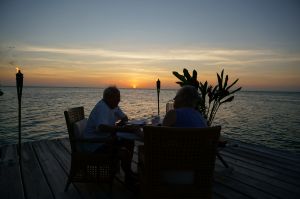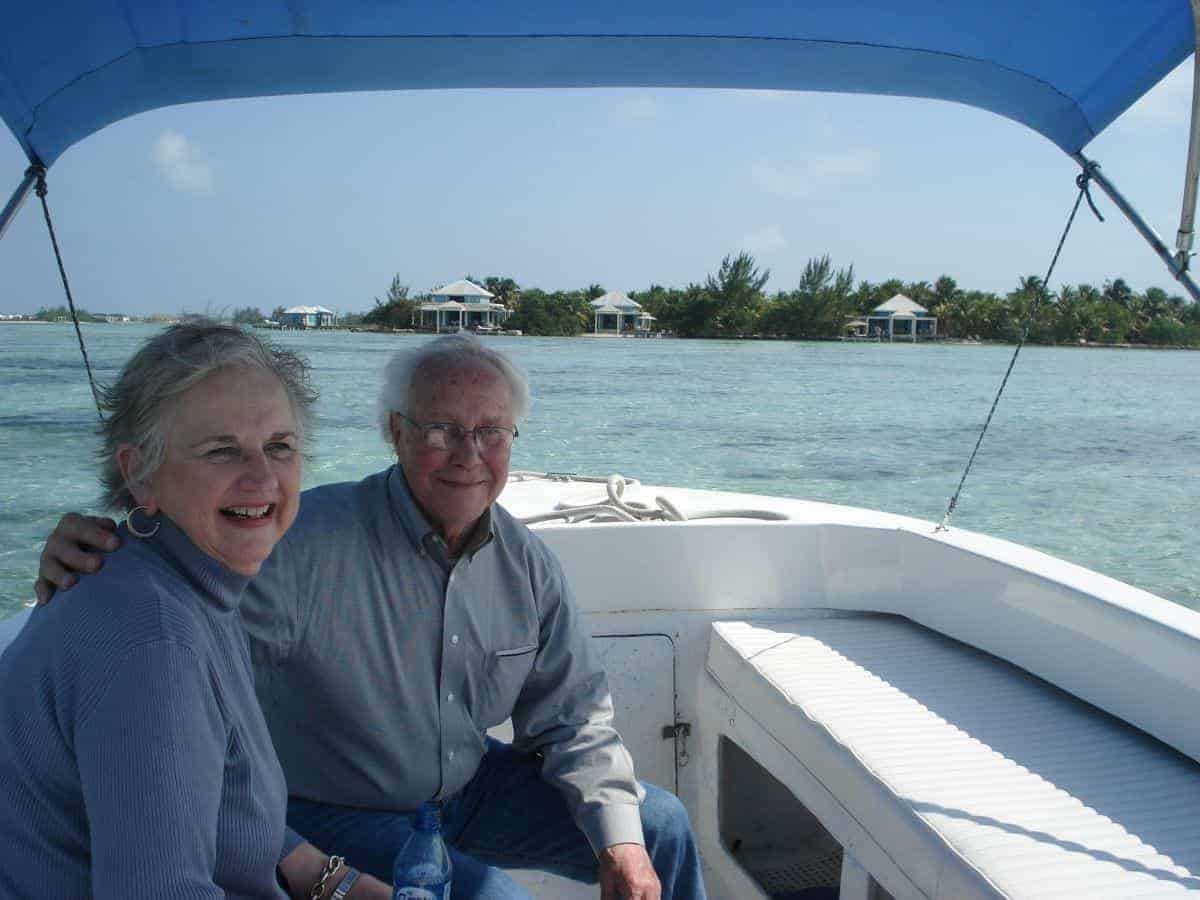Vacation Injury Puts Little Rock Woman on Circuitous Path to UAMS
| May 7, 2018 | On a normal day, Joan Baldridge could reach UAMS’ campus from her Little Rock home in a few minutes. That was not the case in November when Baldridge ultimately needed care in short order.
Baldridge and her husband were at Cayo Espanto. The couple worked to pack and tidy up their villa on the private island off the coast of Belize. Their trip home was the next day. That’s when Baldridge fell on a concrete floor and injured her hip.
“I’m not sure how it happened,” she said. “It happened so fast. I was standing up one moment and the next I wasn’t.”
Baldridge quips that she is no stranger to orthopaedic injuries. She’s broken one hip and had a knee replacement, so she immediately knew something was wrong.
“I had never done something like that to my hip,” she said.
What Baldridge did not expect was the prolonged, harrowing journey home.
It began when the private island was unable to reach its preferred doctor on the mainland. She spent about 12 hours with her husband, George Ballard, and an attentive island staff without medical care. Finally, a helicopter and doctor arrived mid-morning. The helicopter took Baldridge to a hospital in Belize City.
The couple’s travel insurance company provided the next hitch in their journey.
“They insisted on an x-ray to prove my injury, but there were no x-ray machines on the island,” Baldridge said.
A scan with a portable x-ray at the Belize City hospital did not satisfy the company, either. It ultimately accepted a CT scan that indeed showed a fractured hip. By then, it had been nearly 18 hours since Baldridge’s injury occurred.
“We felt helpless,” said Baldridge. “We wondered if we were ever going to get home.”
Baldridge and her husband found strength through the island staff and medical team during her wait.

After a week of enjoying the sunsets and waves on Cayo Espanto, Joan and her husband were packing to leave when she fell and fractured her hip.
It took another handful of hours for the plane sent by the insurance company to arrive. Baldridge and her husband boarded the small, private jet around midnight. Their destination had been set.
During the wait at the hospital in Belize City, Baldridge texted a friend in Little Rock who contacted C. Lowry Barnes, chair of the UAMS College of Medicine’s Department of Orthopaedic Surgery.
As soon as Baldridge’s plane landed in Little Rock, she came to UAMS. Thirty-two hours after her injury, Baldridge could finally see the light at the end of the tunnel.
“I have never been so glad to be any place in my whole life,” Baldridge said. “I was totally focused, mentally and emotionally, on getting home and to UAMS. As we got to UAMS, it was just a relief.”
The afternoon of Nov. 9, Baldridge wheeled into an operating room at UAMS where Paul Edwards, M.D., hip-and-knee surgeon and professor in the Department of Orthopaedic Surgery, performed a total hip replacement.
Edwards said Baldridge’s injury occurred in the upper part of her femur, or thigh bone.
“The hip joint consists of a ball and socket,” said Edwards. “A portion of the ball is attached to the femur, which is known as the femoral neck. As we age, the bone quality and strength fades and the area is at risk for fracture in the instance of a fall or other traumatic incident.”
Robotic-arm technology has emerged as an alternative in orthopaedic surgery, the hope being automation provides more accuracy and better patient results. Research by UAMS orthopaedic surgeons shows achieving better patient results lies elsewhere.
Their work has molded a clinical pathway developed to the patient’s needs. It begins with the first visit and ends with the last checkup.
The orthopaedics staff meets with patients and their families before surgery. Patients and their families learn about the procedure and recovery process. The staff is able to identify and mitigate risk factors.
All UAMS orthopaedic surgeons specialize in a particular service. This includes hip and knee, foot and ankle, shoulder and elbow, hand and upper extremity, back and spine, sports medicine and trauma. UAMS’s hip and knee service includes four fellowship trained surgeons. It is the most fellowship training in joint replacement in Arkansas.
This allows UAMS orthopaedic surgeons to narrow their focus, stay up-to-date on best practices and provide a benefit to the patient, said Edwards.
A designated staff of nurses and health professionals tend to patients following surgery. Patients visit with a physical therapist and are moving the same day as surgery. Most return home within 24 hours of the procedure.
“We have seen this process minimizes the risk for readmissions, complications and leads to a faster recovery,” Edwards said. “New robotic technology has not shown the same advantages to patients.”
The UAMS process made Baldridge a believer.
“I cannot stress enough wonderful UAMS was to me,” said Baldridge. “Everyone was so helpful, understanding and kind, and the care I received was superb.”

